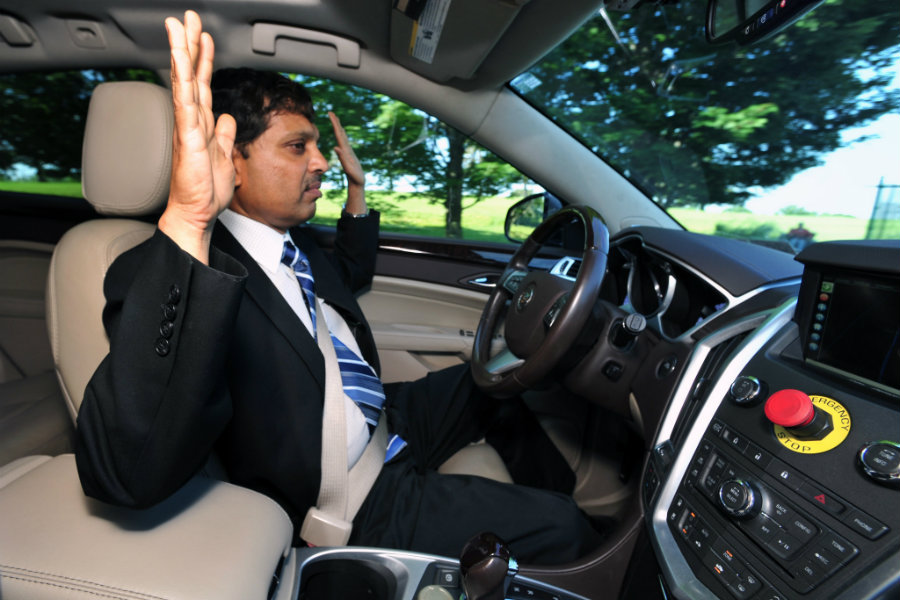Starting from the last week of August, Uber will give customers in downtown Pittsburgh the opportunity to try a self-driving car as their cab, making Uber the first company in having a self-driving car-sharing service in the market. However, Uber’s Pittsburgh fleet is in its trial stage, and as such, a human will sit in the driver’s seat while the cars get tested.
The fleet consists of one hundred modified Volvo XC90 sport-utility vehicles, which are equipped with radars, lasers, GPS, cameras and sensors to allow the car to drive itself. Earlier this year, Uber and Volvo signed a pact to develop a 100% autonomous self-driving car, which is supposed to hit the markets in 2021.

The Pittsburgh fleet is a bold move, since Google, which has always been the “leader” in self-driving vehicles, has been testing its cars for many years. Tesla Motors only offers Autopilot, which drives the car only on highways.
How the idea went down
At the end of 2014, Travis Kalanick, Uber co-founder, and Chief Executive went to Pittsburgh with the aim of hiring experts in self-driving vehicles. According to John Bares, he turned down Kalanick’s offer of a new self-driving project “three times”, until he was convinced of the idea. Notably, Bares founder of Carnegie Robotics, a company that manufactures components for autonomous cars.
Bares finally joined Uber at the beginning of 2015, and in a year he had recruited hundreds of the best experts in the field of robotic, engineering and mechanics. The bold goal was to replace all Uber’s human drivers with computers. Even though many experts believe real self-driving vehicles are “decades” away, Kalanick argues they are closer that one may think.
“We are going commercial,” he says in an interview with Bloomberg Businessweek. “This can’t just be about science.”
Why Kalanick chose Pittsburgh? Because the city hosts the Carnegie Mellon University’s robotics department, widely regarded as one of the best in the country. For example, Sebastian Thrun, the creator of Google’s self-driving vehicles was a researcher at the University, and Chris Urmson, former director of the Google project, was a graduate student there.

More deals, more cars
Otto was founded at the beginning of 2016, and it already developed a kit that permits big trucks to drive themselves on highways, giving the drivers a chance to rest. Right now, the system is being tested around San Francisco.
Although Uber has not publicly disclosed the deal’s price, there are rumors that it would be the equivalent of one percent of Uber’s most recent valuation, or around $680 million. The contract also stipulates that Otto’s employees will get twenty percent of all the profits Uber ears from the independent truck project.
Many believe this is a direct jab at Google, Uber’s largest competitor. The founders of Otto used to be members of Google’s self-driving project until they left because they wanted to build “something that could be launched early”, as stated by Otto’s co-founder Anthony Levandowski.
Plans for Uber and Otto
Levandowski is set to assume leadership of Uber’s driverless car project while continuing to manage the autonomous truck business. Uber’s idea is to open an additional Uber R&D center at the Otto office, and the second one in Palo Alto.
The pair met for the first time at the TED conference in 2012, when Levandowski was explaining an early version of Google’s self-driving car. Kalanick offered to buy the prototypes, to no avail, since the cars were not safe for public use. Then, the two began conversations early this year.

As if they were having an affair, the two would leave their offices unannounced and separately to avoid being seen, and would meet at the city’s Ferry Building.
Crossing bridges are harder than it sounds
Uber has found a weekend in its self-driving system. During a recent test driver, an autonomous vehicle turned un-autonomous when trying to cross the Allegheny River. An alarm alerted the safety driver who took the wheel. After the bridge had been crossed, the self-driving mode went on again. This is in part thanks to the way the autonomous driving system works.
“Bridges are really hard, and there are like 500 bridges in Pittsburgh,” said Krikorian.
How does the car drive itself?
The computer works following an extremely detailed maps of all Pittsburgh. The plans include lane markings, roads, potholes, fire hydrants, buildings, trees, traffic lights, parked cars and everything else that can be used as a guideline. While moving, the car’s computer collects data and compares it with the already existing map in its system.
This helps the car to identify and avoid obstacles such as cyclists, other vehicles, pedestrians, and dogs. Since bridges only have water all around then, there are not enough guidelines to draw a precise conclusion on the car’s location. That is why the computer “panics” and turns off the autonomous mode.
Source: Bloomberg
